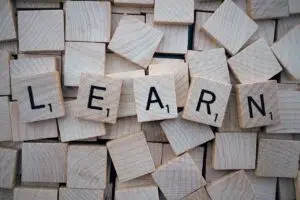What is a learning and development strategy?
A Learning and Development (L&D) strategy guides how an organization nurtures and enhances its employees’ skills, knowledge, and competencies. It aligns the learning objectives with the company’s broader goals, ensuring that the workforce is equipped to meet current and future demands.
It involves identifying the skills gaps within the organization, setting clear goals, and selecting appropriate training methods—such as workshops, e-learning, on-the-job training, or mentoring. It also considers how information will be measured and evaluated to ensure the programs are effective and contribute to overall business performance.
A well-designed L&D strategy fosters continuous learning and development, enhancing employee engagement, productivity, and retention. It also helps organizations stay competitive by adapting to industry changes and technological advancements. By investing in the growth of its people, a company not only empowers its workforce but also drives innovation and long-term success.
There are some important points to learn effectively
Set learning objectives aligned with business goals

Setting learning objectives aligned with business goals is crucial for ensuring that training initiatives contribute directly to an organization’s success. It serve as a roadmap, guiding the development and implementation of training programs that are not just educational, but also strategically beneficial.
- When these objectives are aligned with business goals, they help bridge the gap between employee development and organizational needs. For instance, if a company’s goal is to improve customer satisfaction, the learning objectives might focus on enhancing customer service skills, understanding client needs, and resolving issues effectively.
- This alignment ensures that employees acquire relevant skills and knowledge that can be directly applied to their roles, leading to tangible improvements in performance.
Moreover, clear, business-aligned learning objectives enable organizations to measure the impact of their training efforts. By tracking progress against these objectives, companies can assess whether the training is helping achieve desired outcomes, such as increased sales, higher productivity, or improved quality.
This not only justifies the investment in training but also provides a feedback loop for continuous improvement. Ultimately, aligning learning objectives with business goals ensures that employee development initiatives are purposeful, targeted, and contribute to the overall growth and competitiveness of the organization.
Understanding Your Learning Style

Understanding your learning style is crucial for maximizing your educational experience. Learning styles refer to the various ways individuals prefer to absorb, process, and retain information. The most common styles include visual, auditory, reading/writing, and kinesthetic.
- Visual learners grasp concepts best through images, diagrams, and charts. They thrive on visual aids like graphs and videos.
- Reading/writing learners prefer engaging with text. They learn effectively through reading articles, taking notes, and writing essays.
- They understand concepts better through physical activities, experiments, and role-playing.
- Recognizing your dominant learning style helps tailor your study methods. For example, visual learners can create mind maps, while auditory learners might record and replay lectures.
Often, people have a combination of learning styles, so it’s important to experiment with different techniques to discover what works best. By aligning your study strategies with your learning style, you can improve comprehension, retention, and overall academic performance, making learning a more efficient and enjoyable process.
Alignment with business strategy

Alignment with business strategy is critical for ensuring that an organization’s resources, processes, and initiatives are all directed toward achieving its overarching goals. This alignment involves synchronizing the company’s operations, culture, and capabilities with its strategic objectives, ensuring that every department and employee contributes meaningfully to the business’s success.
- To achieve this, businesses must clearly communicate their strategy across all levels of the organization. This involves setting specific, measurable goals that are directly tied to the strategic vision.
- Departments then tailor their activities and performance metrics to support these goals, fostering a cohesive effort toward common objectives.
- Moreover, aligning with business strategy requires ongoing evaluation and adjustment. As market conditions and organizational priorities shift, businesses need to reassess and realign their strategies to remain competitive.
- This dynamic approach ensures that resources are allocated efficiently, and efforts are focused on areas that drive growth and innovation.
Ultimately, alignment with business strategy helps organizations maintain focus, optimize performance, and achieve sustainable success in an ever-changing business environment. By ensuring that every aspect of the business is working in harmony with the strategic vision, companies can effectively navigate challenges and capitalize on opportunities
Building a Growth Mindset

Unlike a fixed mindset, where people believe their talents are innate and unchangeable, a growth mindset encourages continuous personal and professional growth.
- See them as opportunities to learn rather than threats. When faced with setbacks, view them as valuable lessons, not reflections of your inherent ability.
- Next, cultivate a love for learning. Stay curious and open to new experiences. Seek out feedback, as it provides insights into areas for improvement. Surround yourself with people who inspire growth and encourage you to push beyond your comfort zone.
Finally, practice perseverance. Understand that growth takes time and that consistent effort is key. By adopting these habits, you can develop a growth mindset that empowers you to reach your full potential, adapt to change, and thrive in an ever-evolving world.
Alignment with organizational goals

Alignment with organizational goals” refers to the process of ensuring that individual, team, and departmental efforts are synchronized with the broader objectives of the organization. This alignment is crucial for maximizing efficiency, fostering a unified direction, and achieving strategic outcomes. When employees understand and commit to the organization’s goals, they can prioritize their tasks and make decisions that contribute to overall success.
- For effective alignment, clear communication of goals is essential. Leaders must articulate the organization’s vision and mission in a way that resonates with all levels of the organization.
- Additionally, setting measurable objectives and regularly reviewing progress helps keep everyone focused and accountable.
Alignment also involves recognizing the skills and strengths of employees, ensuring they are deployed in roles that support the organizational goals. This creates a sense of purpose among staff, boosting morale and productivity.
Technical skill development

Technical skill development is crucial in today’s rapidly evolving world. It involves acquiring and enhancing specific abilities needed to perform tasks in various fields such as information technology, engineering, and science. This development is vital for both personal and professional growth, allowing individuals to stay competitive in the job market and adapt to technological advancements.
- The process of developing technical skills often includes formal education, practical experience, and continuous learning through online courses, workshops, and certifications.
- As technology advances, professionals must update their skills to remain relevant. For example, software developers must learn new programming languages or frameworks, while engineers might need to master the latest tools in their industry.
Moreover, technical skill development fosters problem-solving abilities and innovation. By honing these skills, individuals can create more efficient solutions and contribute to the advancement of their fields. It also promotes career flexibility, enabling professionals to pivot to new roles or industries as needed.
Continuous learning

Continuous learning is the process of constantly expanding one’s knowledge and skills throughout life. Continuous learning is essential for personal and professional growth in a rapidly changing world, where technology and industries evolve quickly. It involves actively seeking new information, honing skills, and adapting to new environments or challenges.
This lifelong learning mindset helps individuals stay relevant in their careers, enabling them to adapt to new roles or technologies. It also fosters personal development, as learning new things can increase confidence, creativity, and problem-solving abilities. Continuous learning can take many forms, including formal education, online courses, workshops, self-study, or simply staying curious and engaged with the world.
Organizations also benefit from fostering a culture of continuous learning among their employees, as it leads to a more skilled, adaptable, and motivated workforce. Embracing continuous learning is not just about career advancement but also about staying intellectually stimulated and open to new ideas, ultimately leading to a more fulfilling and successful life.
Conclusion
Continuous learning enables individuals to adapt to change, develop new skills, and enhance their understanding of the world. It fosters creativity, resilience, and the ability to overcome challenges. Growth, both intellectually and emotionally, is a journey that enriches life experiences, builds character, and opens up new opportunities.
Related: Tips to success in life to achieve your goal

